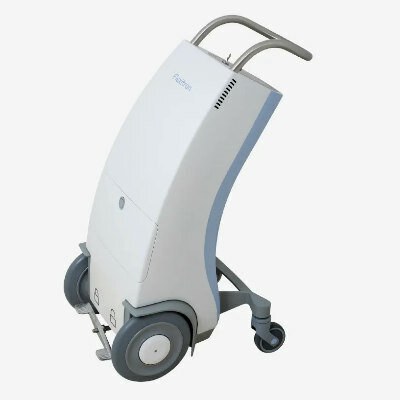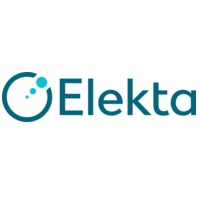New AI Tool Detects Up To 13% More Breast Cancers than Humans Alone
|
By MedImaging International staff writers Posted on 14 Dec 2023 |

In 2020, the World Health Organization reported 2.3 million new breast cancer cases globally, with 685,000 fatalities. Early detection through screening is crucial in reducing the intensity of treatment and mortality rates. Yet, about 20% of breast cancers are potentially missed during early screening stages. A groundbreaking artificial intelligence (AI) tool now promises to significantly enhance the early detection of breast cancers.
Developed by Kheiron Medical Technologies (London, UK) in collaboration with Imperial College London (London, UK), the AI tool named Mia has demonstrated its ability to detect up to 13% more breast cancers than human screeners. Mia, holding a CE Mark class IIa, has shown promise in enhancing breast cancer screenings by identifying cancerous tissues that may be overlooked by human radiologists. In Hungary, where the study was conducted and mammograms undergo double-reading by two radiologists, Mia was introduced as an additional 'reader'.
During the research, spanning April 2021 to January 2023, Mia was tested on mammograms from 25,065 women across four Hungarian screening sites. After initial evaluation by two radiologists, the mammograms were analyzed by Mia, which highlighted potential false negatives for a third human evaluator to review. This process identified mammograms initially cleared by human readers but showing subtle indications of cancer through Mathew's study, divided into three phases (two pilot phases and a live roll-out), revealed that Mia detected 24 more cancers than the standard human readings, marking a 7% relative increase. This led to 70 additional recalls (0.28% relative increase). In the three phases, Mia identified an additional 6, 13, and 11 cancers respectively, enhancing the relative cancer detection rate by 13%, 10%, and 5%.
Significantly, 83% of the extra cancers detected through Mia in real clinical settings were invasive, underlining Mia’s effectiveness in identifying cancers that greatly benefit from early detection. The researchers have emphasized the need to validate these findings in other nations with different screening approaches and populations. They have also noted that the follow-up period of two to nine months requires an extension to fully evaluate Mia’s impact on cancer detection and mortality reduction. Concurrently, a comprehensive study in the UK is nearing completion to affirm the benefits of the AI-assisted reader workflow, with plans to initiate the roll-out in the US.
“Our prospective real-world usage data in Hungary provides evidence for a significant, measurable increase of early breast cancer detection when Mia is used in clinical practice. The key question now is how we can justify not using Mia in breast screening when there is such a dramatic improvement in cancer detection,” said Dr. Peter Kecskemethy, CEO of Kheiron.
“These results have exceeded our expectations. Our study shows that using AI can act as an effective safety net – a tool to prevent subtler signs of cancer falling through the cracks. Seeing first hand that the use of AI could substantially reduce the rate of missed cancers in breast screening is massive, and a major boost for our mission to transform cancer care with AI technology,” said Dr. Ben Glocker from Imperial’s Department of Computing, who leads machine learning research teams at Imperial and Kheiron.
Related Links:
Kheiron Medical Technologies
Imperial College London
Latest General/Advanced Imaging News
- New AI Method Captures Uncertainty in Medical Images
- CT Coronary Angiography Reduces Need for Invasive Tests to Diagnose Coronary Artery Disease
- Novel Blood Test Could Reduce Need for PET Imaging of Patients with Alzheimer’s
- CT-Based Deep Learning Algorithm Accurately Differentiates Benign From Malignant Vertebral Fractures
- Minimally Invasive Procedure Could Help Patients Avoid Thyroid Surgery
- Self-Driving Mobile C-Arm Reduces Imaging Time during Surgery
- AR Application Turns Medical Scans Into Holograms for Assistance in Surgical Planning
- Imaging Technology Provides Ground-Breaking New Approach for Diagnosing and Treating Bowel Cancer
- CT Coronary Calcium Scoring Predicts Heart Attacks and Strokes
- AI Model Detects 90% of Lymphatic Cancer Cases from PET and CT Images
- Breakthrough Technology Revolutionizes Breast Imaging
- State-Of-The-Art System Enhances Accuracy of Image-Guided Diagnostic and Interventional Procedures
- Catheter-Based Device with New Cardiovascular Imaging Approach Offers Unprecedented View of Dangerous Plaques
- AI Model Draws Maps to Accurately Identify Tumors and Diseases in Medical Images
- AI-Enabled CT System Provides More Accurate and Reliable Imaging Results
- Routine Chest CT Exams Can Identify Patients at Risk for Cardiovascular Disease
Channels
MRI
view channel
PET/MRI Improves Diagnostic Accuracy for Prostate Cancer Patients
The Prostate Imaging Reporting and Data System (PI-RADS) is a five-point scale to assess potential prostate cancer in MR images. PI-RADS category 3 which offers an unclear suggestion of clinically significant... Read more
Next Generation MR-Guided Focused Ultrasound Ushers In Future of Incisionless Neurosurgery
Essential tremor, often called familial, idiopathic, or benign tremor, leads to uncontrollable shaking that significantly affects a person’s life. When traditional medications do not alleviate symptoms,... Read more
Two-Part MRI Scan Detects Prostate Cancer More Quickly without Compromising Diagnostic Quality
Prostate cancer ranks as the most prevalent cancer among men. Over the last decade, the introduction of MRI scans has significantly transformed the diagnosis process, marking the most substantial advancement... Read moreUltrasound
view channel
Deep Learning Advances Super-Resolution Ultrasound Imaging
Ultrasound localization microscopy (ULM) is an advanced imaging technique that offers high-resolution visualization of microvascular structures. It employs microbubbles, FDA-approved contrast agents, injected... Read more
Novel Ultrasound-Launched Targeted Nanoparticle Eliminates Biofilm and Bacterial Infection
Biofilms, formed by bacteria aggregating into dense communities for protection against harsh environmental conditions, are a significant contributor to various infectious diseases. Biofilms frequently... Read moreNuclear Medicine
view channel
New SPECT/CT Technique Could Change Imaging Practices and Increase Patient Access
The development of lead-212 (212Pb)-PSMA–based targeted alpha therapy (TAT) is garnering significant interest in treating patients with metastatic castration-resistant prostate cancer. The imaging of 212Pb,... Read moreNew Radiotheranostic System Detects and Treats Ovarian Cancer Noninvasively
Ovarian cancer is the most lethal gynecological cancer, with less than a 30% five-year survival rate for those diagnosed in late stages. Despite surgery and platinum-based chemotherapy being the standard... Read more
AI System Automatically and Reliably Detects Cardiac Amyloidosis Using Scintigraphy Imaging
Cardiac amyloidosis, a condition characterized by the buildup of abnormal protein deposits (amyloids) in the heart muscle, severely affects heart function and can lead to heart failure or death without... Read moreGeneral/Advanced Imaging
view channel
New AI Method Captures Uncertainty in Medical Images
In the field of biomedicine, segmentation is the process of annotating pixels from an important structure in medical images, such as organs or cells. Artificial Intelligence (AI) models are utilized to... Read more.jpg)
CT Coronary Angiography Reduces Need for Invasive Tests to Diagnose Coronary Artery Disease
Coronary artery disease (CAD), one of the leading causes of death worldwide, involves the narrowing of coronary arteries due to atherosclerosis, resulting in insufficient blood flow to the heart muscle.... Read more
Novel Blood Test Could Reduce Need for PET Imaging of Patients with Alzheimer’s
Alzheimer's disease (AD), a condition marked by cognitive decline and the presence of beta-amyloid (Aβ) plaques and neurofibrillary tangles in the brain, poses diagnostic challenges. Amyloid positron emission... Read more.jpg)
CT-Based Deep Learning Algorithm Accurately Differentiates Benign From Malignant Vertebral Fractures
The rise in the aging population is expected to result in a corresponding increase in the prevalence of vertebral fractures which can cause back pain or neurologic compromise, leading to impaired function... Read moreImaging IT
view channel
New Google Cloud Medical Imaging Suite Makes Imaging Healthcare Data More Accessible
Medical imaging is a critical tool used to diagnose patients, and there are billions of medical images scanned globally each year. Imaging data accounts for about 90% of all healthcare data1 and, until... Read more
Global AI in Medical Diagnostics Market to Be Driven by Demand for Image Recognition in Radiology
The global artificial intelligence (AI) in medical diagnostics market is expanding with early disease detection being one of its key applications and image recognition becoming a compelling consumer proposition... Read moreIndustry News
view channel
Bayer and Google Partner on New AI Product for Radiologists
Medical imaging data comprises around 90% of all healthcare data, and it is a highly complex and rich clinical data modality and serves as a vital tool for diagnosing patients. Each year, billions of medical... Read more



















